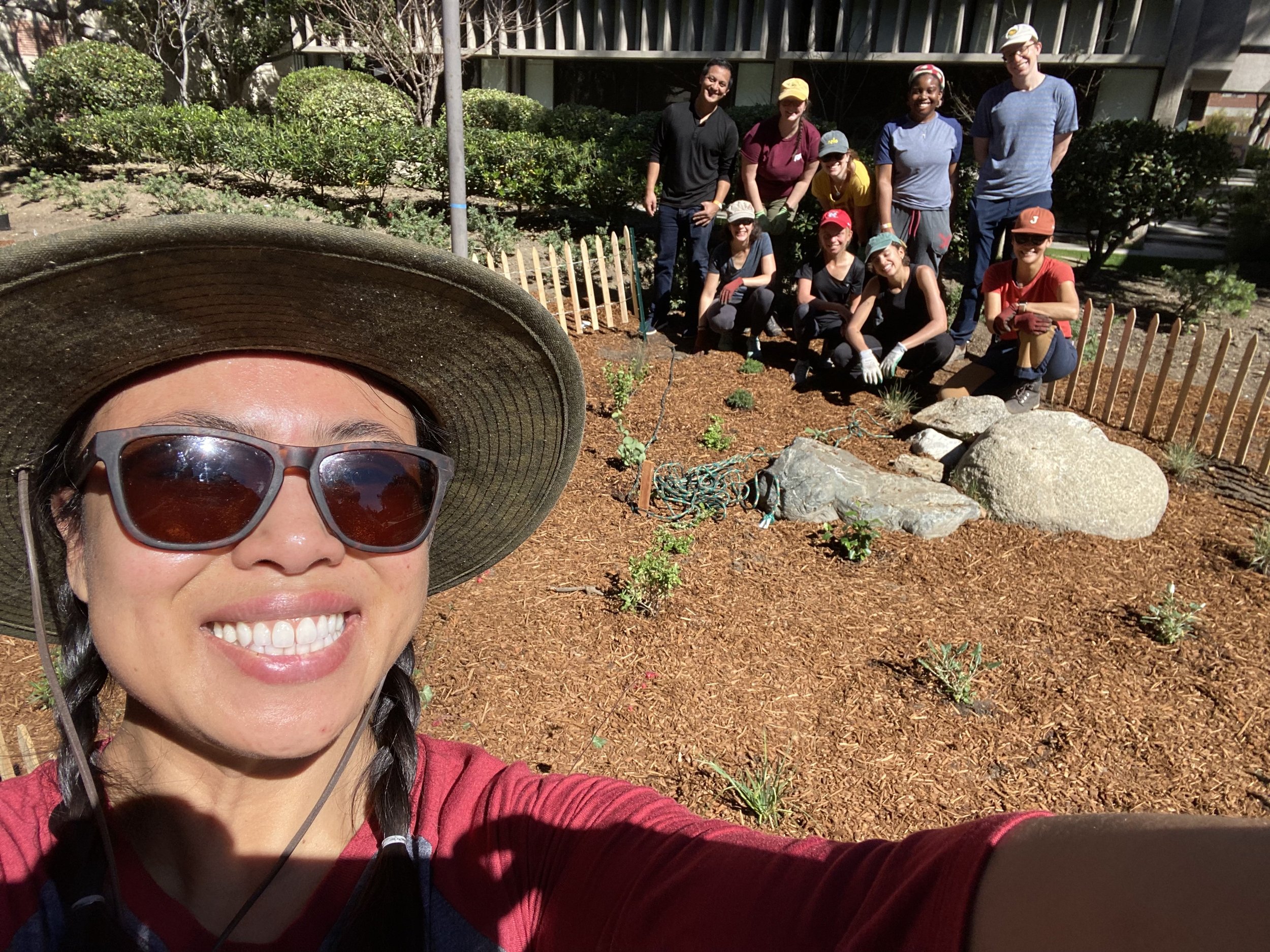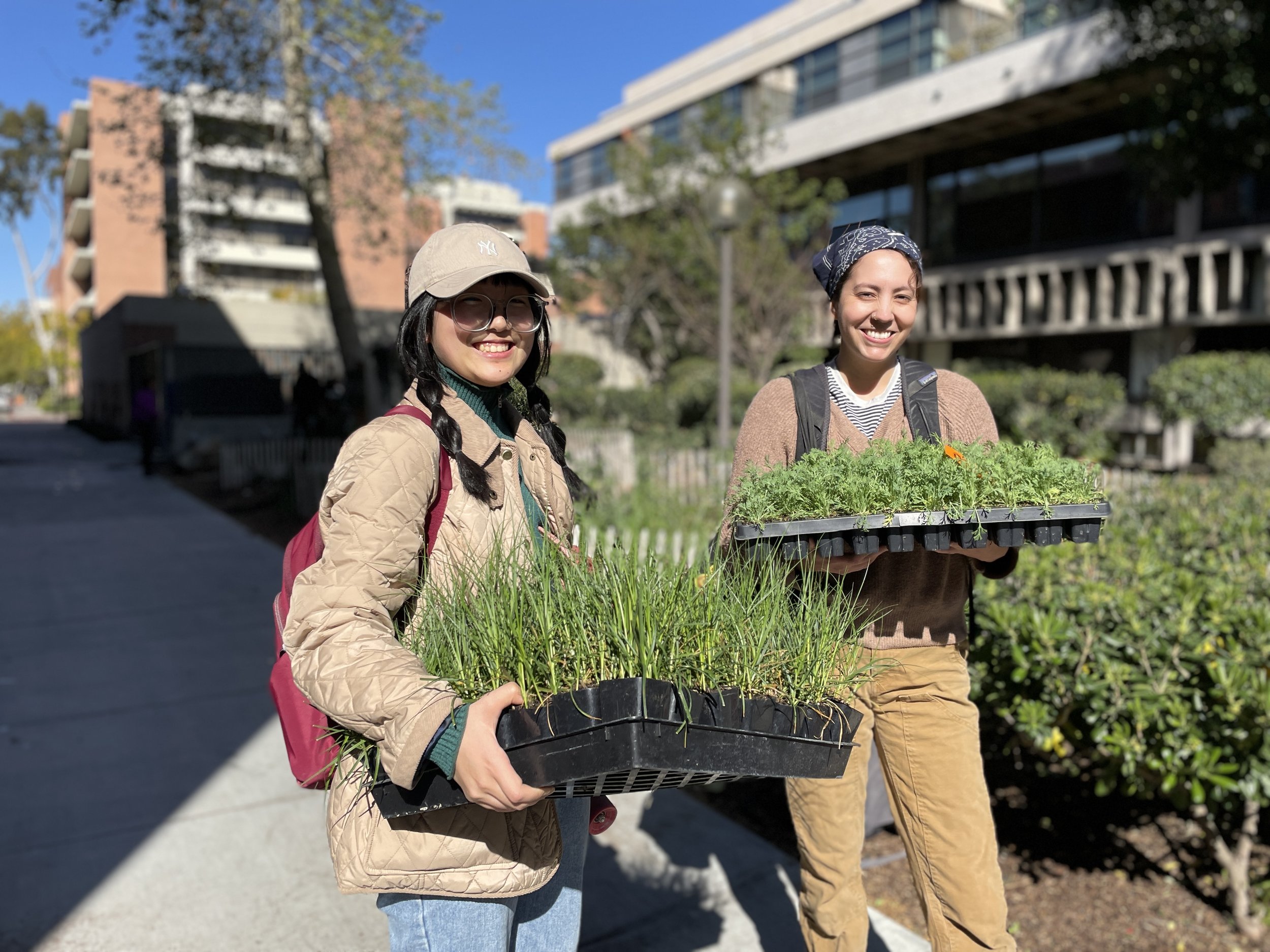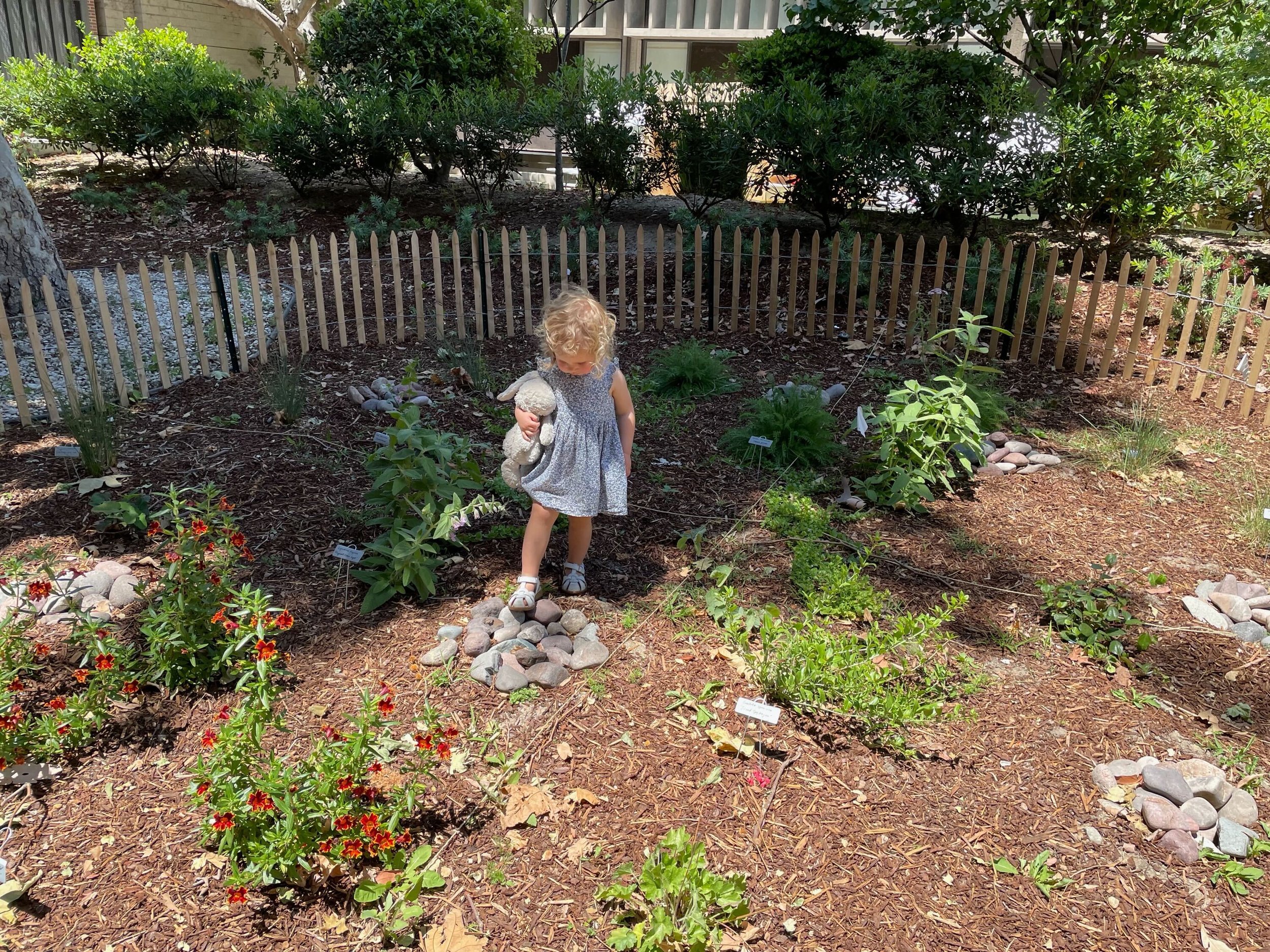USC Campus Test Plot
Small sites on a big campus that act as a living lab for drought conditions
In 2015, the University of Southern California launched the Sustainability 2020 Plan, its first-ever campus-wide resilience program. Goals include energy conservation, waste diversion, expanded transportation options and engagement with students and faculty to make the 229-acre USC campus a living laboratory for sustainability. To that end, landscape architecture students and professors met with University Facilities to determine their sustainability goals for the campus landscape and to offer design, maintenance, and implementation support. The group came up with four proposed landscape strategies.
PROPOSED LANDSCAPE STRATEGIES FOR THE USC CAMPUS
Transition to native plants & enhance biodiversity
Transition campus into living lab with opportunities for research & teaching
Enhance water conservation strategies through drought tolerant plant species
Implement campus composting procedures to eliminate food & other biowaste
CAMPUS LANDSCAPE
The University Park campus sits just southwest of downtown LA. It was developed by two master plans in 1920 and 1961 that favored a red-brick architecture style. More recently, the school has removed vestiges of old roads to implement more pedestrian-friendly quads and gardens and connect it to surrounding neighborhoods. The campus landscape has traditionally favored grass and so-called exotic ornamentals.
In the same way that the American Dream has often included a white picket fence around a grassy green yard, the Great American University has often centered around a lush lawn – a perfect backdrop for studying, strolling, and academic brochures. West Coast schools seemed to take a page from East Coast ones like Harvard and Yale, which in turn imitated Oxford and Cambridge. But all that green adds up. One study found that by 2000, turf grass constituted around 2 percent of the entire continental United States, making it the single largest “irrigated crop,” surpassing wheat and corn. The Southwest’s multi-year megadrought has made water conservation one of the top goals for any sustainability plan. Longer, hotter heat waves, fueled by climate change, mean irrigating lawns will require even more water in the near future. Local water districts are scrambling to cut back as reservoirs hit record lows. So residents have been asked to limit outdoor watering and many institutions are looking for ways to do the same.
THE TEST
We wanted to know how we could help a large campus like USC transition away from turf. And do so without requiring the intense labor of hand-watering new natives species. The first step was removing thirsty grass from this 1,000 square foot plot. Then students worked with University Facilities and Planning to implement native species that suit the university's aesthetic (Trojan colors a plus!), community use and student engagement, habitat creation, and resilience needs. They also considered what plants were hardy enough to withstand disturbance and could be maintained easily. Students evaluated the site ecology and developed a new planting plan. A variety of small sites on campus with differing sun/shade and aspect were chosen to test out native plant species and maintenance strategies on campus.
The main test here was the idea of vertical mulching, a water harvesting strategy. We dug a deep hole using an electric drill – about three feet deep – adjacent to new plantings. The hole was filled with mulch cover, stones and water to encourage deep root growth and allow for less frequent, deep watering (similar to an olla or small water infiltration basin). Rather than remove the existing irrigation system – pop-up sprinkler heads to douse the lawn – we decreased the frequency from three times weekly to once a week. For Year One, we’ll be testing the ability of the campus to transition to native plants but still use an automatic irrigation system.
PLANT LIST
*featuring USC colors of red and gold
Achillea millefolium
Berberis aquifolium
Cercis occidentalis
Clinopodium douglasii
Ceanothus hearstiorum
Diplicus aurantiacus 'Fiesta Marigold'
Eriogonum grande 'Rubescens'
Eriogonum fasciculatum
Gambelia speciosa
Heuchera maxima
Juncus patens
Lepechinia fragrans
Muhlenbergia dubia
Keckilia Cordifolia
Polysitchum munitum
Ribes virburnifolium
Ribes sanguineum
Ribes malvaceum
Salvia mellifera
Solidago californica
Symphoricarpos albus var. laevigatus
Woodwardia fimbriata
LOG
TEAM
—Arch 590 Test Plot Directed Research Course
Spring 2022
—Jen Toy, Lecturer, USC School of Architecture, Landscape Architecture + Urbanism Program
—Alexander Robinson, Associate Professor, USC School of Architecture, Landscape Architecture + Urbanism Program
Students: Gabrielle Castriotta, Asher Guzik, Eva Malis, Nina Weithorn.
PARTNERS
—Erik Diaz and Santiago Arredondo (Landscape Supervisors, Facilities Planning and Management, USC Campus)
YEAR
—March 2022 initial planting
—2023-2024 Winter urban superbloom
MONITORING
—2022-2023: Nina Weithorn, Danielle Velazco
—2023-2024: Jeremy Joo
THANK YOU
—Evan George (website description)



















